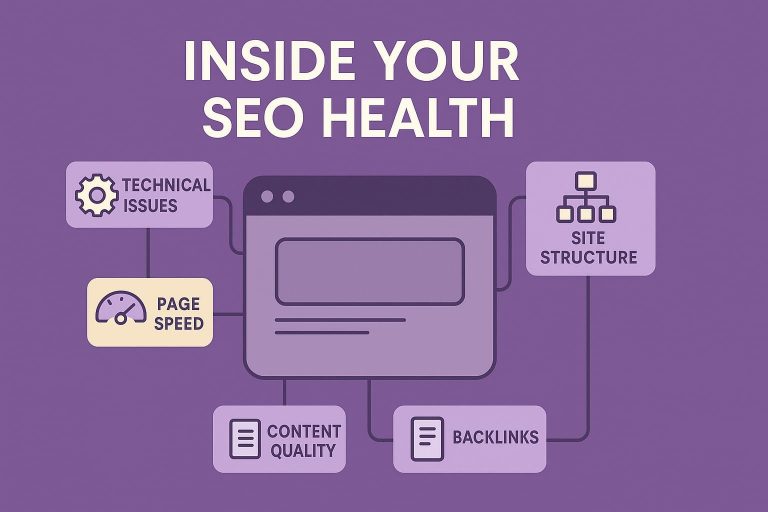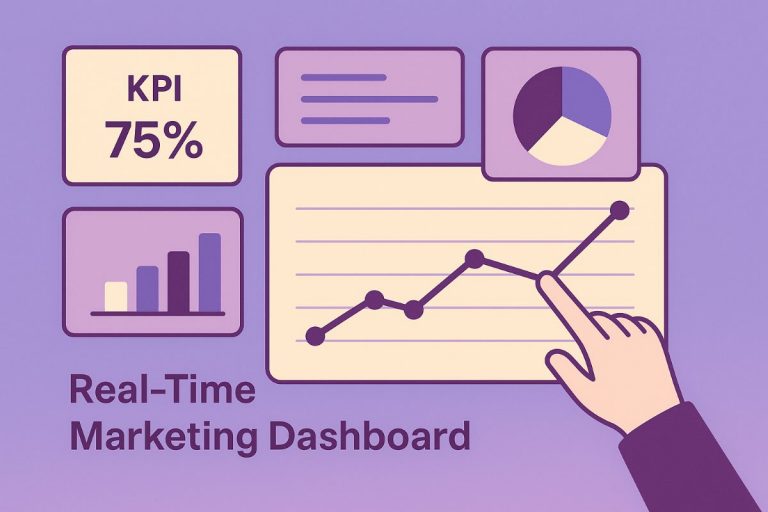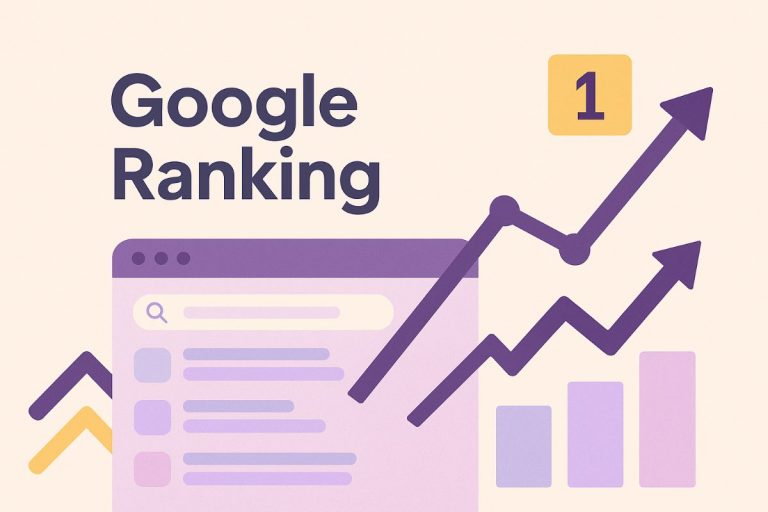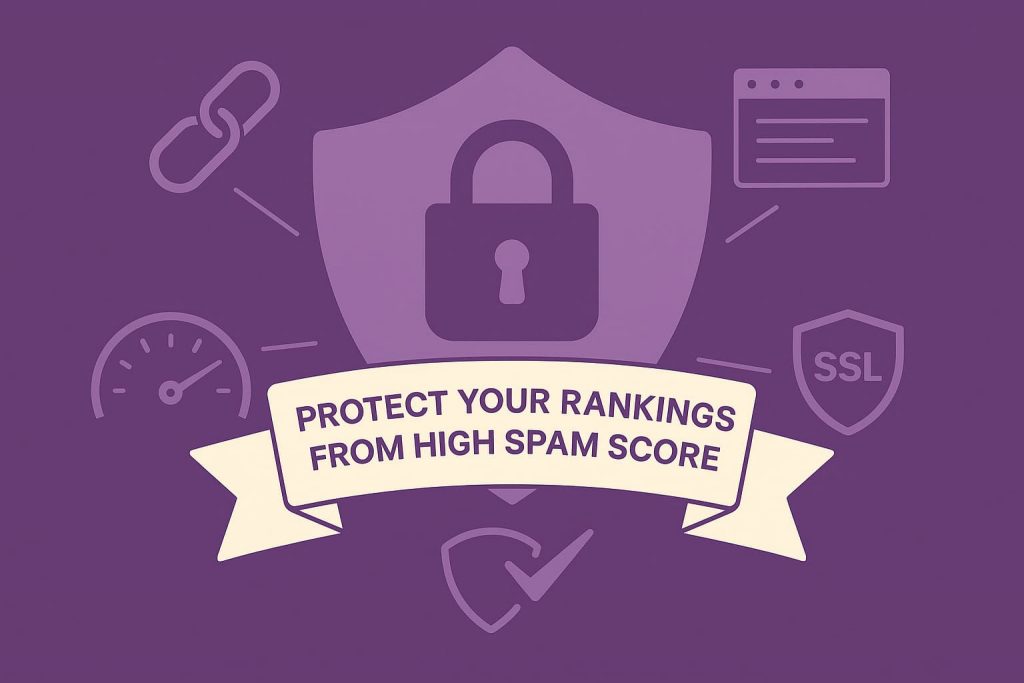
- What is Website’s Spam Score?
- How Spam Scores Impact Your SEO Performance
- How to Check Your Website’s Spam Score
- Key Factors That Influence Your Website’s Spam Score
- Proven Strategies to Reduce Your Website’s Spam Score
- Implementing Ongoing Monitoring to Prevent Future Issues
- Case Study: Reducing a Client’s Spam Score from 65% to 12%
- Avoiding Black-Hat SEO Techniques
- Maintaining a Healthy Website for Long-Term SEO Success
- FAQs
Research shows, that more than 18% of websites with a high spam score lose up to 40% of their organic traffic within six months. Imagine your top keyword rankings suddenly slipping, even though your content strategy and link-building haven’t changed. In many cases, the hidden culprit is this silent trust signal — spam score. Understanding what it means and reducing the risks early can help you protect not just your rankings, but also your site’s long-term credibility with search engines.
What is Website’s Spam Score?
A spam score is a metric that estimates how likely a website is to trigger SEO penalties based on risky signals in its backlink profile, content, and technical setup. While not a direct Google ranking factor, it strongly correlates with how search engines evaluate website reputation and search visibility in the SERPs.
Different tools measure it in slightly different ways: Moz spam score uses a set of link-based signals, Semrush and Ahrefs focus on toxic backlinks, and Google Search Console highlights potentially harmful links and manual actions. Despite the variations, the underlying message is the same — spam ratings are a red flag that your site may be seen as untrustworthy. Treating spam score seriously is essential for protecting your website’s search engine trust and long-term performance.
How Different Tools Measure Spam Scores
| Tool | Metric Name | Focus Area | Scale / Output |
|---|---|---|---|
| Moz | Spam Score | Link patterns, anchor text, domain signals | Percentage (0–100%) |
| Semrush | Toxic Score | Backlink toxicity, referring domains, anchor profile | Percentage + “Toxic/Non-toxic” tags |
| Ahrefs | DR + Link Spam Flags | Authority + suspicious link growth and anchor issues | Score (0–100) + Warning flags |
| Google Search Console | Manual Actions / Link Report | Harmful links, penalties, security problems | Warnings, no numeric score |
Pro Tip: Don’t panic if your spam score meaning looks high in one tool but moderate in another. These systems calculate risk differently. Always cross-check results before making major SEO decisions.
How Spam Scores Impact Your SEO Performance
A high spam score can quietly erode your SEO performance by signaling to Google that your website may not be fully trustworthy. While spam score itself isn’t a direct metric in algorithm updates, it reflects issues that search engines consider problematic.
Sites with elevated scores often suffer ranking drops, reduced organic traffic, and weaker search visibility in the SERPs. In one client audit, cleaning up toxic backlinks lowered their spam risk profile, and within two months their keyword positions stabilized — restoring confidence in the site’s trust signals and overall website trustworthiness.
Negative impacts of high spam score:
- Reduced search rankings.
- Decline in organic traffic.
- Diminished trust with search engines.
- Risk of algorithmic penalties.
What’s an Acceptable Spam Score?
An acceptable spam score isn’t the same for every website. Generally, scores under 10% are considered safe, 11–30% are worth monitoring, and anything above 30% can raise concerns. Based on Moz and Semrush benchmarks, “good” means your site stays in the low range, but thresholds vary by industry and domain type. Evaluate trends over time instead of obsessing over a single number.
Spam Score Ranges
| Range | Status | Meaning for Website Health |
|---|---|---|
| 0–10% | Green | Low risk, generally safe |
| 11–30% | Yellow | Monitor closely, minor fixes |
| 31%+ | Red | High risk, urgent attention |
How to Check Your Website’s Spam Score
To check spam score, use multiple SEO tools and cross-verify results for a reliable domain spam score.
1. Moz: Open Link Explorer, enter your domain, and review the Spam Score in Overview. Inspect anchors, linking domains, and Spam Flags for deeper link evaluation.
2. Semrush: Create a project → Backlink Audit → run the crawl. Review Toxic Score, markers, and removal/disavow suggestions.
3. Ahrefs: In Site Explorer (or Ahrefs Webmaster Tools), analyze Backlink profile. Check DR, anchors, and sudden link spikes using built-in backlink analysis tools.
4. Google Search Console: Check Links, Manual actions, and Security issues. Pair these signals with broader website analysis.
Free options: GSC is free, AWT is free for verified sites, and Moz/Semrush offer limited free tiers. Cross-check before acting.
Pro Tip: Don’t rely on a single spam score checker. Cross-check with at least two tools — Moz and Semrush, for example — to confirm patterns before deciding to remove or disavow links.
Spam Score Checkers — Access, Features, Our Take
| Tool | Access / Pricing | Notable Features | Pros | Cons | Our Take (Rating) |
|---|---|---|---|---|---|
| Moz | Free (limited); paid plans | Spam Score, Spam Flags, anchors, linking domains | Clear % risk signal | Limited free exports | Strong for quick risk reads |
| Semrush | Free (limited); paid plans | Backlink Audit, Toxic Score, remove/disavow workflow | Actionable workflow | Project setup overhead | Great for remediation |
| Ahrefs / AWT | AWT free for verified sites; paid plans | DR, backlink profile, anchor analysis, growth patterns | Powerful discovery | No single “spam score” | Best for investigation |
| Google Search Console | Free | Links report, Manual actions, Security issues | First-party signals | No numeric score | Essential baseline |
Interpreting Your Spam Score Results
Treat spam score analysis as triage plus context.
- Under ~10%: maintain and monitor.
- 11–30%: schedule fixes; prioritize clusters of low-quality domains, manipulative anchors, and sitewide links.
- 31%+: act now — remove or neutralize spammy links, attempt outreach, then prepare a disavow if needed.
Pro Tip: A moderate spam score isn’t always a crisis. Focus on trends over time and clusters of suspicious links. Google looks for patterns, not isolated red flags.
Interpret patterns, not isolated links. Watch for sudden link velocity, exact-match anchor bursts, irrelevant/referral-network domains, and spam flags from Moz/Semrush. Pair report data with rankings and traffic to validate risk.
Example: a spike from related sites using identical commercial anchors indicates coordinated spam detection — tackle that cluster first.
Key Factors That Influence Your Website’s Spam Score
Your website spam score often climbs because of a handful of recurring spam factors. The biggest culprits are toxic backlinks from irrelevant or low-quality sites, thin or duplicate content, and technical weaknesses that undermine website trustworthiness. In client audits, these SEO risk factors tend to cluster: link networks and manipulative anchors signal spam indicators, while poor site security or cloaking also contribute to negative spam signals.
Understanding which elements weigh most heavily helps prioritize fixes. For example, backlinks typically drive 40–50% of the problem, while content quality issues or technical gaps account for smaller but still significant portions. By separating high-impact issues from minor ones, you avoid wasting time on cosmetic fixes and instead focus on the real causes of a rising spam score.
Backlink Quality and Profile Analysis
Backlinks remain the strongest influence on spam scoring. A natural link profile includes diverse referring domains, branded anchors, and links from relevant sites. By contrast, toxic backlinks from link farms, networks with identical anchors, or spammy directories generate red flags in Moz, Semrush, and Ahrefs reports.
During audits, patterns such as hundreds of exact-match anchors, sudden link bursts, or sitewide links from unrelated blogs often reveal manipulative behavior. These harmful backlinks weaken trust and require cleanup — either outreach to webmasters or eventual use of the Google Disavow Tool.
Pro Tip: Always evaluate backlinks in clusters. One suspicious link won’t ruin your profile, but a pattern of suspicious links from the same network can dramatically inflate your spam score.
High-Quality vs. Low-Quality Backlinks
| Characteristic | High-Quality Link | Low-Quality Link |
|---|---|---|
| Relevance | From industry-related site | From irrelevant domain |
| Anchor Text | Brand or natural phrase | Exact-match commercial keyword |
| Placement | Editorial content | Footer/sidebar, sitewide placement |
| Domain Authority | Established, trusted domain | New, spammy, or penalized domain |
| Link Context | Surrounded by useful content | Surrounded by random/outdated text |
Link Velocity and Unnatural Growth Patterns
Link velocity — the rate of new backlink acquisition — can itself trigger spam signals. A sudden spike from dozens of suspicious domains looks unnatural to Google’s algorithm updates, even if the links are real.
Healthy growth is gradual, showing steady increases from varied sources. Unnatural link patterns include rapid surges tied to campaigns, or bursts from identical anchor text. To avoid penalties, pace link-building activities and balance outreach with earned, editorial links.
Pro Tip: Keep your link acquisition rate aligned with your site’s authority. A brand-new local site adding 100 backlinks in a month looks spammy, while the same growth on a mature SaaS site might be natural.
Recommended Link Acquisition Pacing by Website Type and Age
| Website Type | Site Age | Recommended Monthly Link Growth | Notes |
|---|---|---|---|
| Local business site | 0–6 months | 5–10 high-quality links | Focus on citations, directories, local partnerships |
| 6–12 months | 10–20 links | Gradual growth through content marketing, local PR | |
| Ecommerce site | 0–6 months | 10–15 links | Start with product roundups, influencer mentions |
| 6–12 months | 20–30 links | Blend of editorial links, niche blogs, partnerships | |
| SaaS / Tech startup | 0–6 months | 15–25 links | Early-stage PR, guest posts, thought leadership |
| 6–12 months | 25–40 links | Scale with content hubs, case studies, podcasts | |
| Established brand | 1+ years | 30–50+ links | Larger campaigns acceptable due to strong baseline authority |
Content Quality Issues That Raise Red Flags
Low-quality content is another driver of high spam ratings. Sites with thin content, repetitive keyword stuffing, or large blocks of duplicate text resemble content farms and signal manipulation. The Google Helpful Content Update specifically targets this problem.
In audits, we’ve flagged clients where hundreds of near-identical product descriptions inflated their spam signals. Fixing this through rewritten, value-driven content not only lowered their spam score but also improved engagement.
Content red flags to watch for:
- Thin or auto-generated articles.
- Over-optimized keyword density.
- Duplicate or scraped text.
- Pages with no clear value for the user.
Technical SEO Factors That Influence Spam Ratings
Even technical issues affect spam ratings. Common problems include weak site security (missing SSL certification), malware, cloaking, or hidden text that Google Search Console often flags. Page speed, crawlability, and mobile-friendliness also matter.
One audit uncovered a client with a chain of broken redirects and hidden text from a compromised plugin. Fixing these technical SEO gaps immediately improved trust signals.
Pro Tip: Schedule quarterly technical audits in Google Search Console and third-party crawlers. Issues like expired SSL or hidden text often appear suddenly and can spike your spam ratings if not caught early.
Technical checks during spam audits:
- HTTPS / SSL status.
- Malware and hacked code scans.
- Mobile-Friendly Test results.
- Redirect chains and canonical issues.
- Hidden text or cloaking detection.
On-Page SEO Practices That Can Hurt Your Spam Score
Aggressive on-page SEO can look spammy. Overloaded meta tags, doorway pages, or hidden text designed to manipulate rankings send negative signals. While well-meaning, tactics like repeating a target keyword across headers often backfire.
One client saw their score rise due to doorway-style service pages — thin, nearly identical, optimized for city names. After consolidating them into richer pages, rankings and trust improved.
Legitimate vs. Spammy On-Page SEO
| Area | Legitimate Practice | Spammy Practice |
|---|---|---|
| Meta Tags | Concise, unique descriptions | Overstuffed with keywords |
| Content Structure | Clear H1/H2 with natural phrasing | Multiple H1s, keyword repetition |
| Landing Pages | Focused, value-driven content | Doorway pages with minimal variation |
| Text Visibility | Readable, user-first text | Hidden or cloaked keyword blocks |
Proven Strategies to Reduce Your Website’s Spam Score
Lowering a spam score requires consistent action and the right sequence of steps. From cleaning up toxic backlinks to strengthening content and fixing technical issues, every effort contributes to spam score improvement and helps improve website reputation. In practice, some fixes — like disavowing harmful links — show results within weeks, while others, such as rebuilding domain quality and authority, take months.
At Lead Craft, we’ve seen that comprehensive audits and systematic execution accelerate results. DIY methods work, but professional SEO services often cut the recovery timeline in half by spotting hidden risks early.
Recommended order of actions to reduce spam score:
- Audit backlink profile.
- Remove or disavow toxic links.
- Diversify anchor text distribution.
- Improve content quality and E-E-A-T signals.
- Address technical SEO issues (SSL, crawlability, speed).
- Build authority and trust signals.
Pro Tip: Don’t try to fix everything at once. Start with the factors that carry the highest risk signals — usually backlinks — then move on to content and technical SEO.
How to Clean Up Your Backlink Profile
A strong spam recovery starts with a backlink audit. Begin in Moz, Semrush, or Ahrefs to identify toxic backlinks. Prioritize domains with irrelevant content, excessive exact-match anchors, or sitewide placements.
Step-by-step:
- Export backlink data from multiple tools.
- Tag unnatural links by relevance and trustworthiness.
- Attempt outreach — ask webmasters to remove harmful backlinks.
- If removal fails, prepare a disavow file and submit it in Google Search Console using the Google Disavow Tool.
This process typically reduces the spam score of a website within 4–8 weeks. Clients often see keyword positions stabilize once toxic links are neutralized.
Pro Tip: Always document outreach attempts. Google values visible effort to remove links before using the disavow option.
Diversifying Your Anchor Text
An unbalanced anchor profile is a major spam trigger. Excessive use of commercial keywords signals link spam, while healthy profiles show anchor text diversity with branded anchors, generic phrases, and partial matches.
Best practice:
- Branded anchors: 40–60%.
- Generic anchors (“click here”): 10–20%.
- Partial match / topical anchors: 20–30%.
- Exact-match commercial anchors: <5%.
Pro Tip: Track anchor text distribution quarterly. A sudden rise in exact-match anchors often points to manipulative link building.
Content Optimization Techniques That Lower Spam Scores
Weak content can make a site look untrustworthy. To reduce spam signals, conduct a content audit and flag pages with thin content, excessive repetition, or duplication. Focus on rewriting with user intent, applying Google’s E-E-A-T principles.
Content quality benchmarks:
- Original insights or data.
- Clear structure with headings.
- Readable and helpful tone.
- Minimal keyword stuffing.
- Unique meta descriptions.
Pro Tip: Don’t delete weak pages blindly. Consolidate similar thin pages into one authoritative resource to preserve equity and lower spam risk.
Fixing Technical Issues That Contribute to High Spam Scores
Technical weaknesses often amplify spam ratings. Common culprits include missing SSL certification, malware injections, poor crawlability, or hidden text. A technical audit with Google Search Console or third-party crawlers reveals these issues.
Technical SEO fixes by priority:
- Implement HTTPS / SSL.
- Clean up malware or hacked code.
- Repair redirect chains and canonical tags.
- Improve mobile-friendliness and speed.
- Detect and remove cloaking or hidden text.
Pro Tip: Automate monitoring. Set up alerts for SSL expiration and malware scans to catch issues before they inflate your spam score.
Improving Domain Authority and Trust
Long-term spam recovery depends on building website trust and authority. Strong trust signals offset spam indicators and increase resilience against algorithm updates.
Trust signals to implement:
- Secure, branded domain.
- Consistent NAP (name, address, phone) data.
- Positive third-party reviews.
- Quality press mentions.
- Author bios with expertise.
- Regular fresh content.
Pro Tip: Domain authority doesn’t grow overnight. Consistent PR, partnerships, and content marketing build credibility that counteracts spam signals over time.
Implementing Ongoing Monitoring to Prevent Future Issues
Keeping spam risks under control requires proactive SEO monitoring. After cleanup, set up recurring checks in Google Search Console, Moz, Semrush, or Ahrefs to track backlink monitoring and link health. Schedule regular audits every quarter, with monthly spot checks for growing sites.
Key warning signs: sudden surges in low-quality backlinks, unexpected spam flags, or security alerts in GSC. A simple monitoring system includes backlink alerts, content quality reviews, and technical scans — forming the backbone of ongoing website maintenance.
Regular maintenance tasks to keep spam scores low:
- Review backlinks monthly for toxic domains.
- Audit anchor text distribution quarterly.
- Run security and malware scans.
- Verify SSL certificates and renewals.
- Refresh thin or outdated content.
- Monitor site speed and mobile usability.
Pro Tip: Prevention costs less than recovery. Catching toxic link spikes or expired SSLs early avoids months of lost rankings and trust.
Case Study: Reducing a Client’s Spam Score from 65% to 12%
In this SEO case study, a mid-sized ecommerce site approached us with a spam score of 65% in Moz. The site had suffered from a negative SEO campaign that flooded it with low-quality backlinks, causing steep ranking drops and a 40% decline in organic traffic.
We conducted a full audit using Semrush and Moz, uncovering clusters of spammy links from unrelated domains and over-optimized anchors. Actions included outreach for link removal, a carefully built disavow file submitted via Google Search Console, and a content refresh targeting thin product pages.
Within eight weeks, the site’s spam score reduction reached 30%, and by the fourth month, it stabilized at 12%. Rankings for high-value keywords returned, and organic traffic grew by 55% compared to baseline. The recovery highlighted the importance of sequencing — addressing backlinks first, then content and trust signals.
Avoiding Black-Hat SEO Techniques
Black-hat SEO promises quick wins, but almost always ends in Google penalties. Common spam techniques include buying links, cloaking, doorway pages, keyword stuffing, and automated link blasts. These manipulative practices may temporarily boost rankings, but the long-term costs are steep: traffic collapse, loss of trust, and sometimes manual actions that take months to recover from.
In audits, we’ve seen clients hit with algorithmic penalties after aggressive link schemes — recoveries required extensive cleanup and domain trust rebuilding. Sustainable growth relies on white-hat methods: quality content, natural link acquisition, and user-focused optimization. Choosing shortcuts risks not just your rankings, but your entire business visibility.
Black Hat vs. White-Hat SEO Practices
| SEO Area | Black-Hat Technique | White Hat Alternative | Risk Level |
|---|---|---|---|
| Link Building | Buying links, link farms | Editorial outreach, partnerships | High |
| Content | Keyword stuffing, spun text | Original, value-driven content | High |
| Technical SEO | Cloaking, hidden text | Clean code, structured data | High |
| Growth Tactics | Doorway pages | Optimized landing pages with intent | Medium |
Maintaining a Healthy Website for Long-Term SEO Success
Strong website health depends on consistent SEO maintenance rather than one-time fixes. Preventing spam signals, protecting website reputation, and investing in sustainable SEO practices ensure long-term resilience.
From audits to technical upgrades, the most successful businesses treat spam prevention as ongoing work. Based on years of client experience, the key is balance: monitor backlinks, improve content, and strengthen trust signals regularly. Over time, these habits not only keep spam scores low, but also build steady rankings and conversions.
Top 5 actions for long-term SEO success:
- Run quarterly full-site audits.
- Monitor backlinks monthly.
- Keep content fresh and user-focused.
- Maintain strong technical SEO (speed, SSL, mobile).
- Build brand trust with consistent signals.
Ready to strengthen your site’s reputation and lower your spam score? Partner with Lead Craft for a full audit and proven SEO strategies that deliver lasting growth.
FAQs
Can a high spam score directly cause Google penalties?
A high spam score itself does not trigger penalties. It reflects risky signals that Google algorithms often associate with spam. If unresolved, these issues may lead to manual actions or algorithmic ranking losses.
How quickly can I expect to see results after reducing my spam score?
Results vary by issue type. Backlink cleanup may show improvements within weeks, while rebuilding trust and domain authority often takes several months. Consistent monitoring and phased implementation are essential for measurable recovery.
Do all SEO tools calculate spam score the same way?
No. Moz assigns a percentage based on link patterns, Semrush uses a Toxic Score, and Ahrefs relies on domain metrics and link flags. Each tool highlights risk differently, so cross-verifying is essential.
What’s the difference between spam score and domain authority?
Spam score measures potential risk signals that harm trust, while domain authority estimates overall backlink strength and credibility. One indicates red flags, the other reflects power. Both metrics complement each other in SEO analysis.
Is it possible to have a low spam score but still get penalized by Google?
Yes. Spam score is an indirect indicator. Google penalties can occur for violations unrelated to backlinks, such as thin content, cloaking, or malware. Low spam scores do not guarantee complete immunity from penalties.














 464
464  10 min
10 min




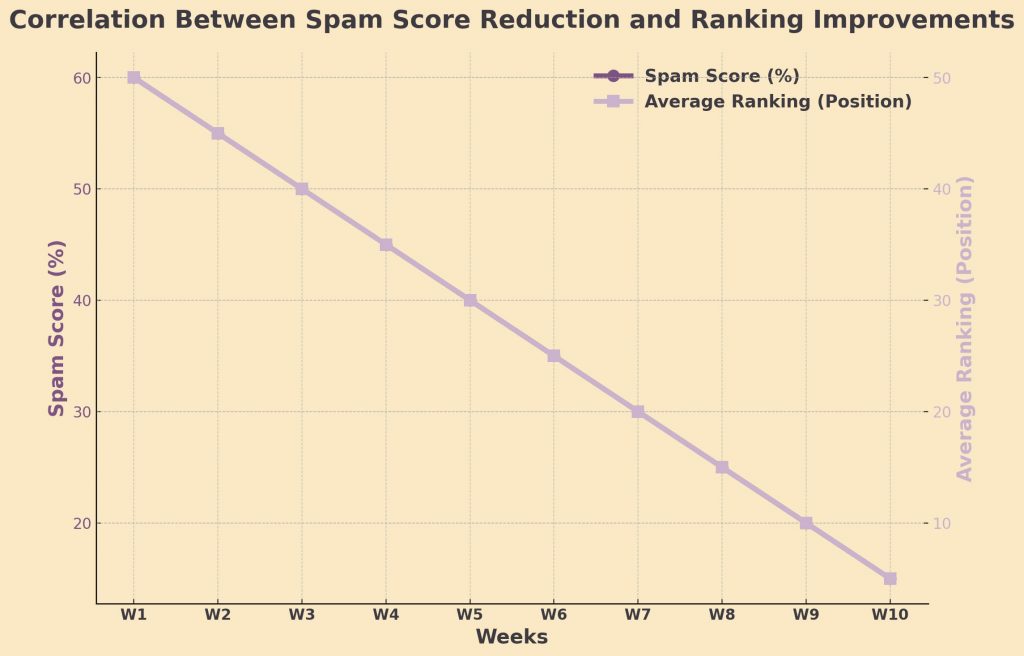
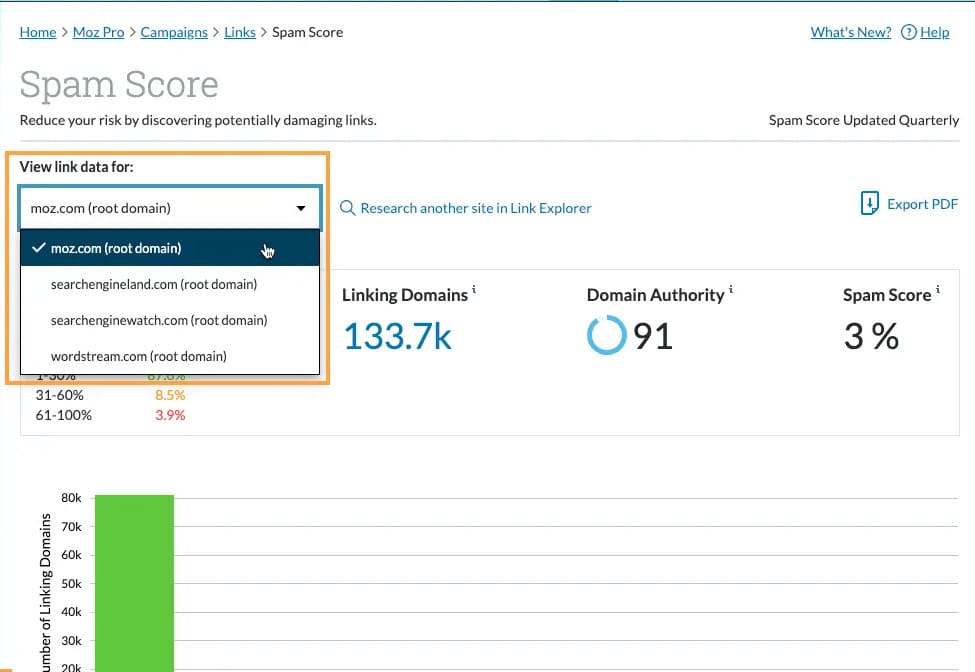
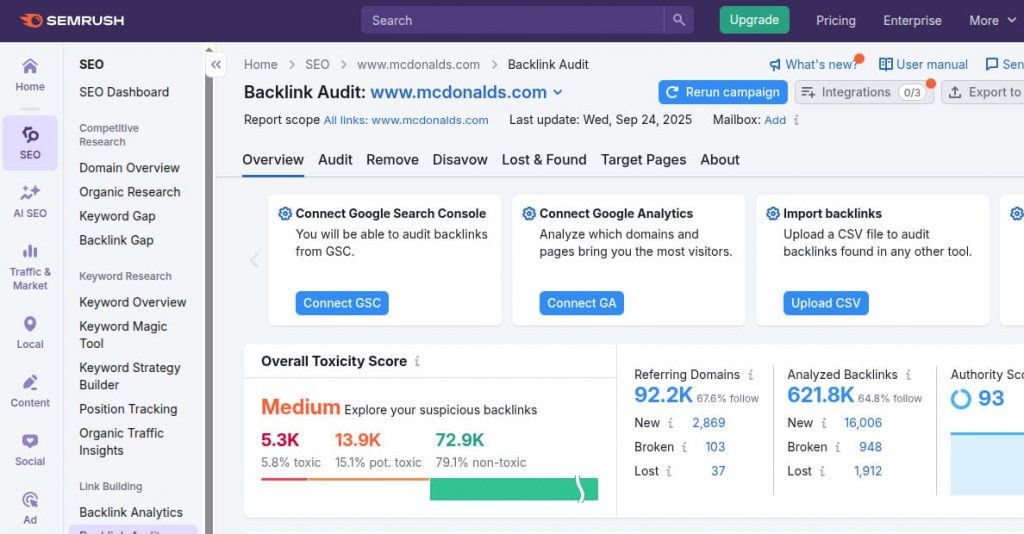
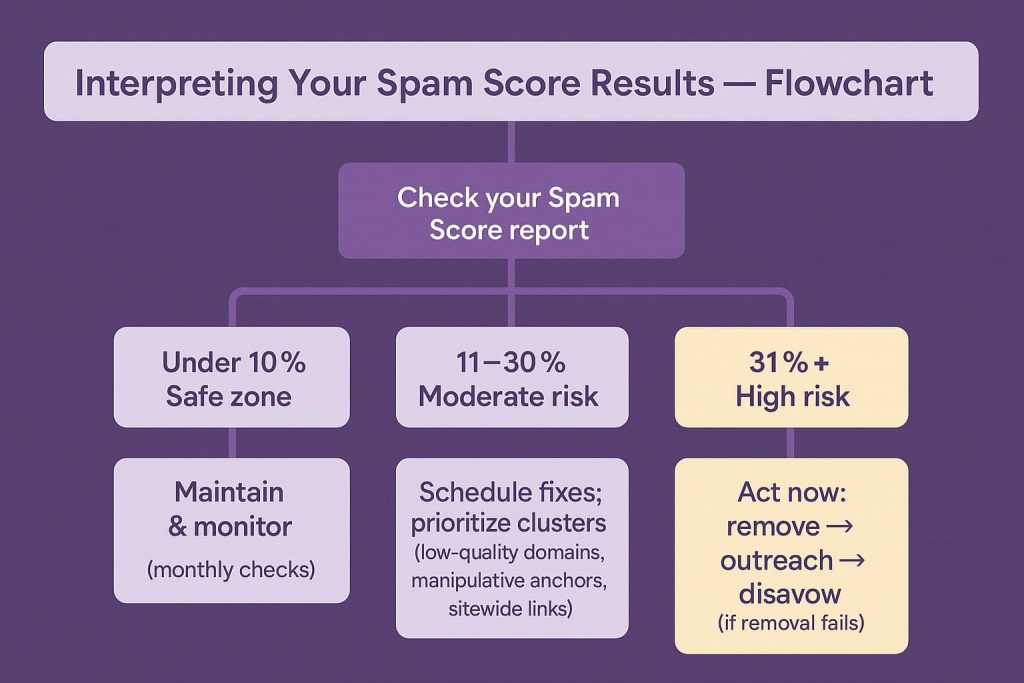
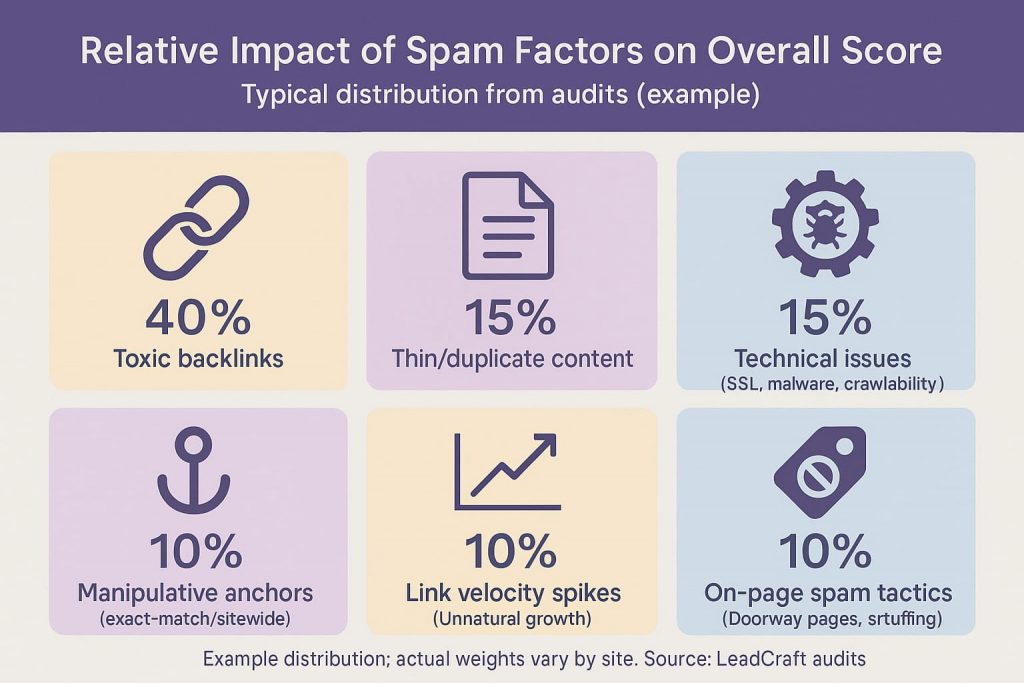
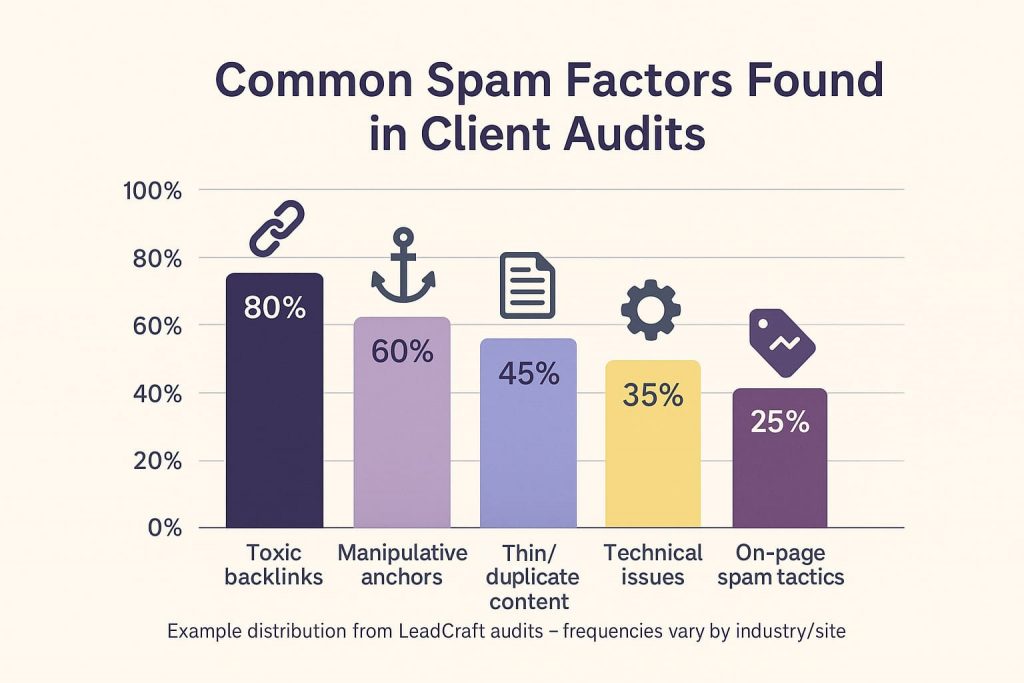
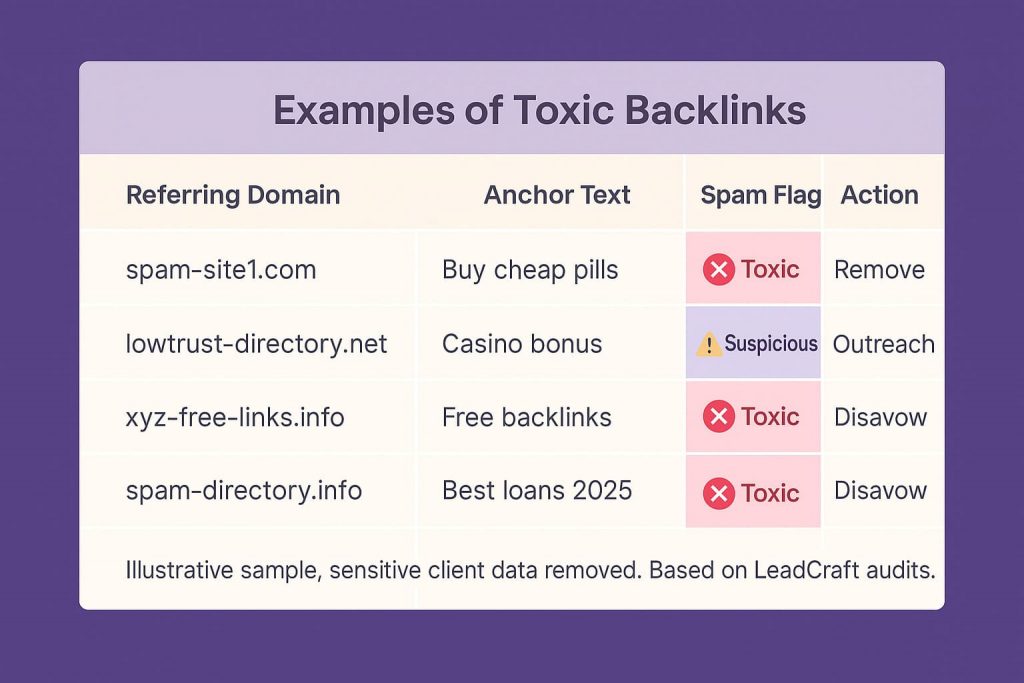
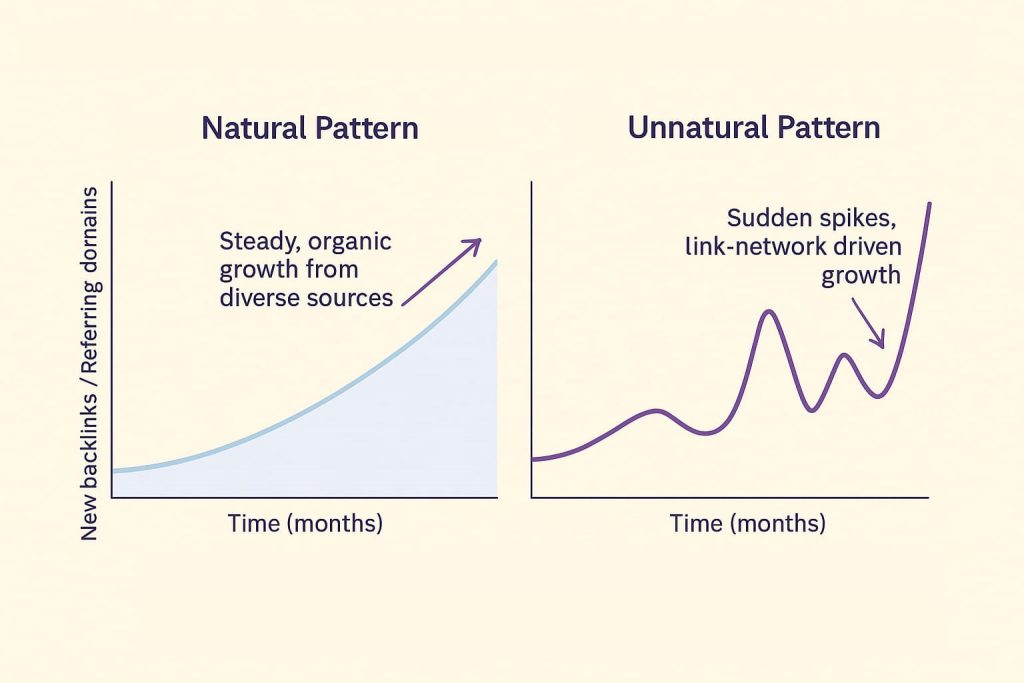
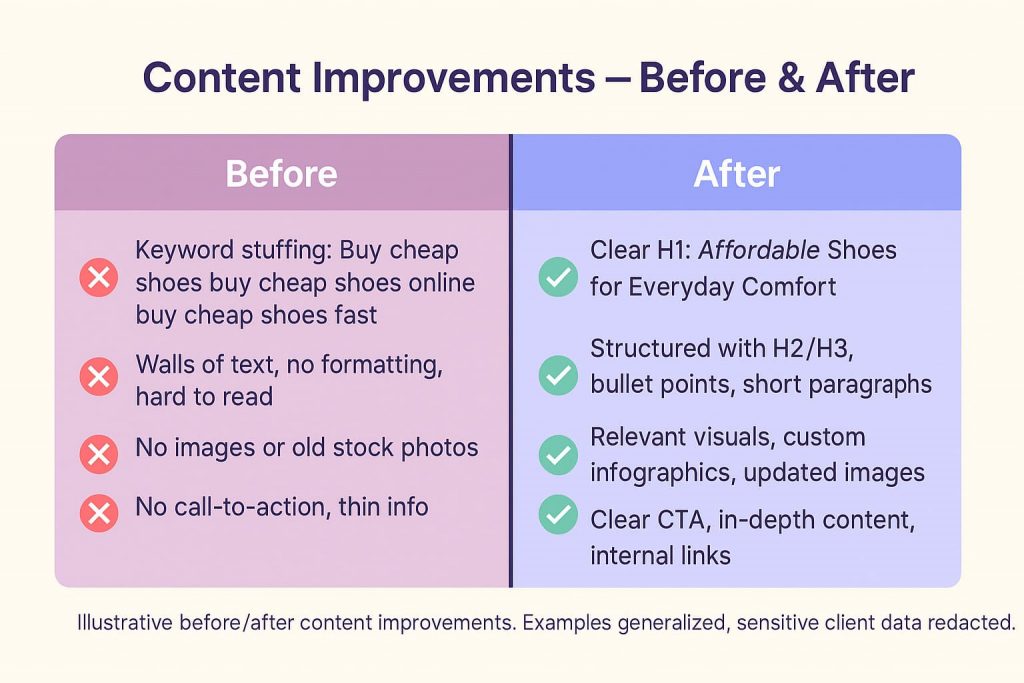
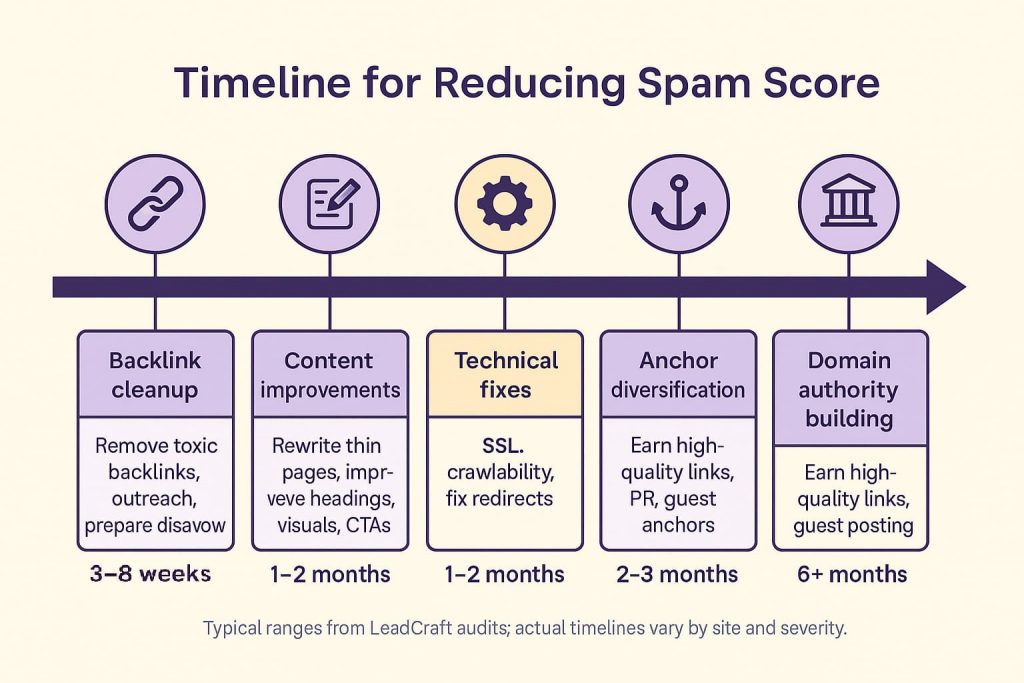
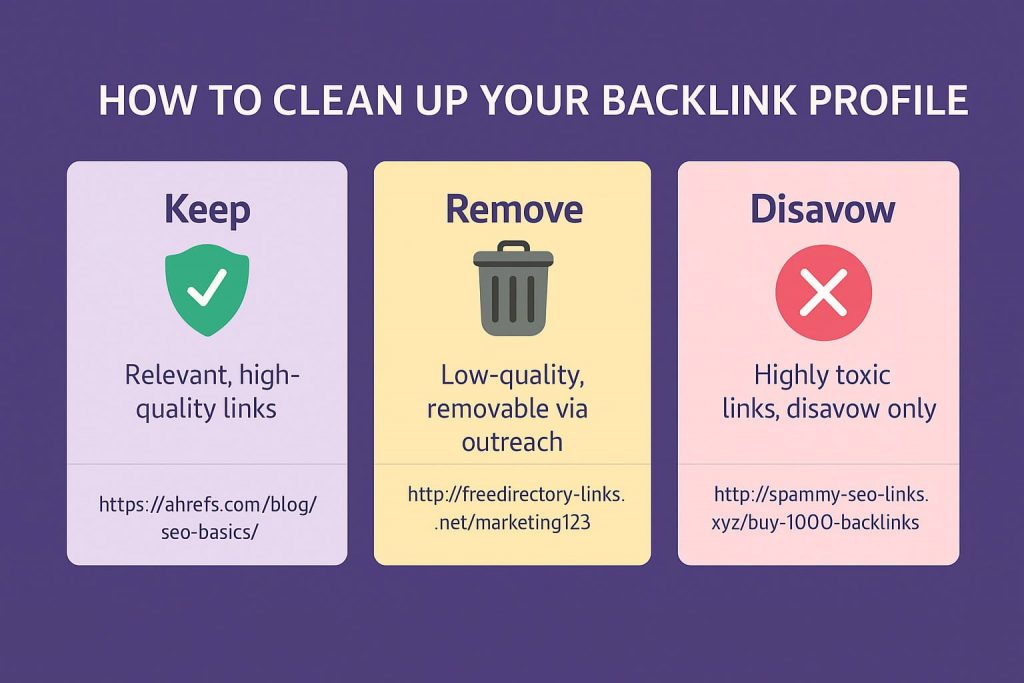
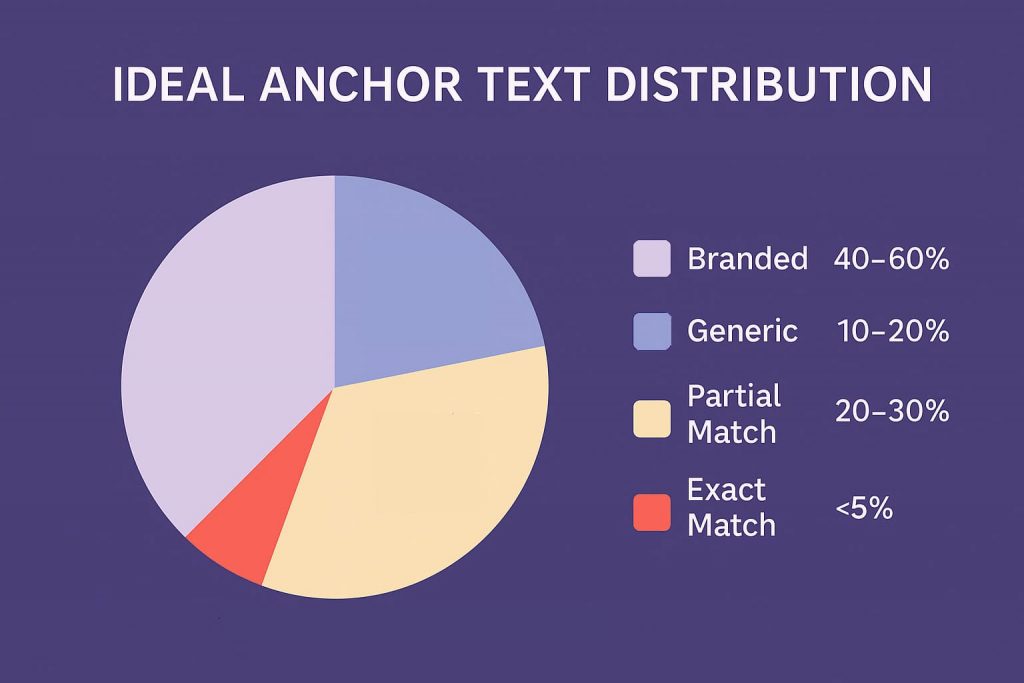
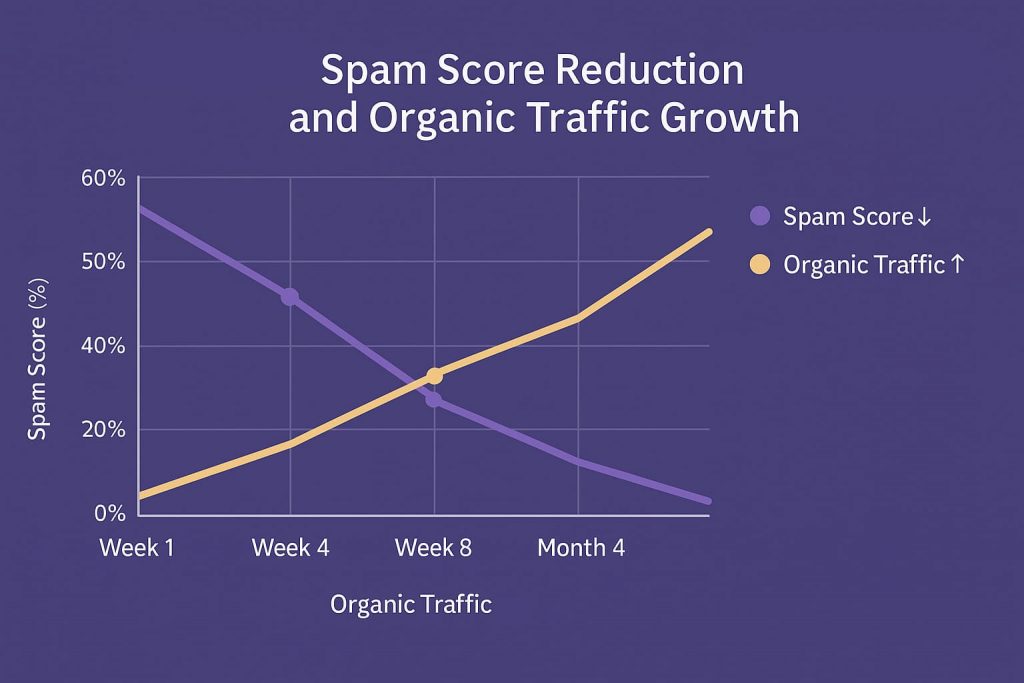
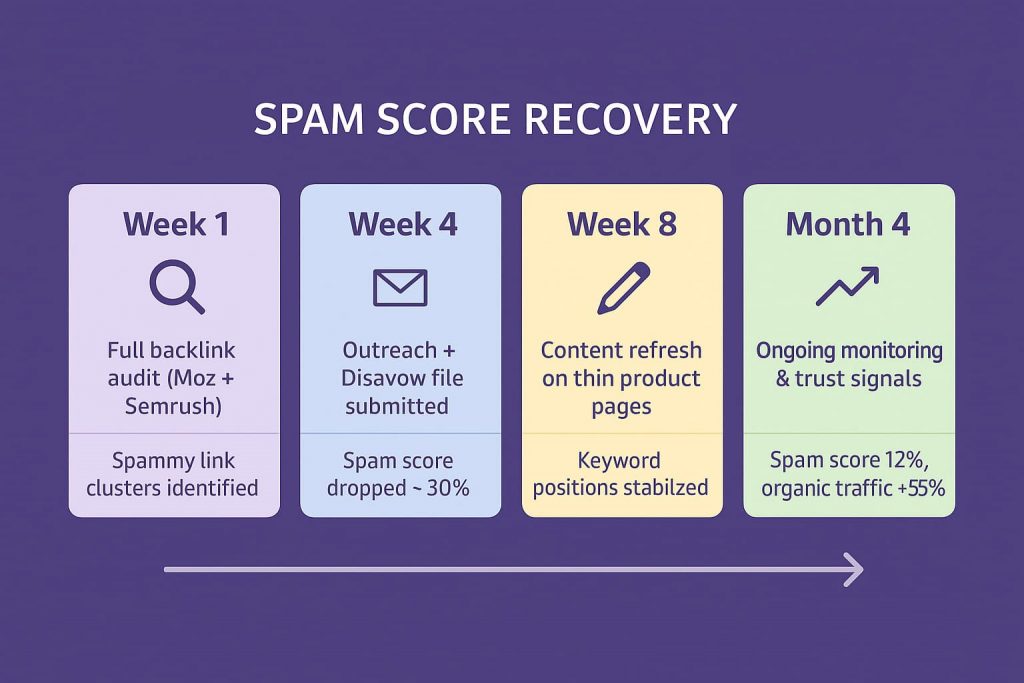
 Share
Share
 X
X
 LinkedIn
LinkedIn













